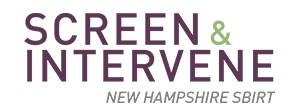October 16th, 2014

Amy Pepin, MSW
Screening and brief intervention is receiving increasing recognition as a cost effective prevention service. Multiple studies showing the efficacy of brief intervention by physicians in reducing harmful alcohol use have led to dissemination and implementation of what is commonly known as SBIRT (Screening, Brief Intervention, and Referral to Treatment) or SBI (Screening and Brief Intervention). Implementation throughout the country includes screening and brief intervention for alcohol and drug use/misuse, with various populations, in a variety of settings with widely varied protocols and practice flow. The medical community’s embrace of SBIRT, as well as the federal, state, and private support for SBIRT are extraordinarily positive momentum toward treating this disease in the primary healthcare setting and, overall, reducing the stigma of these health problems.
I am mystified by the uproar caused by a recent article by Saitz et al (Saitz, et al., 2014) which concludes that “Brief intervention does not have efficacy for decreasing unhealthy drug use in primary care patients identified by screening.”[1] Effective brief intervention for unhealthy drug use needs further study to explore effectiveness of the patient identification, content, timing, setting, and provider of such intervention and to delineate that from brief treatment protocols. Clearly, brief intervention with the design, setting, and participants of this randomized trial was not effective. The participants were adults, using marijuana and other drugs, who were not diagnosable with a substance use disorder. For those of us who have worked in the prevention, intervention and/or treatment of substance use disorders the results of this study come asno surprise. Brief intervention is not a magic new way to stop drug use – that should not be the expectation of implementation.
The simple beauty of SBIRT in healthcare settings is that it becomes a familiar component of the health visit for the patient and a consistent check-in conducted with the provider. It is a process that elicits engagement between the patient and the provider that manifests itself in a conversation. This process ofalcohol and drug screening and follow up will happen at least annually. For patients with unhealthy use or addiction, SBIRT is creating a confidential connection to the healthcare provider that is built over time. This connection is reducing the stigma of revealing and talking about substance use; it is educating patients about the potential health consequences of that use, and identifying where patients in need can reach out for more assistance with drug or alcohol use problems.
The Screen & Intervene: NH Youth SBIRT Initiative is enabling providers to start this engagement by assisting New Hampshire healthcare providers to implement SBIRT for patients who are at the typical age of use initiation – 12 years old. Young people who begin having this alcohol and drug screening as a regular part of healthcare will have different expectations and conversations with their healthcare provider over time. This will equip providers to be able to identify and treat alcohol and drug misuse and encourage young people to confide in their provider, which are some of the necessary building blocks to preventing addiction in NH.
By, Amy Pepin, Consultant, NH Center for Excellence
[1] Saitz, R., Palfai, T. P., Cheng, D. M., Alford, D. P., Bernstein, J. A., Lloyd-Travaglini, C. A., . . . Samet, J. H. (2014). Screening and brief intervention for drug use in primary care: The ASPIRE randomized clinical trial. JAMA, 502-513.
